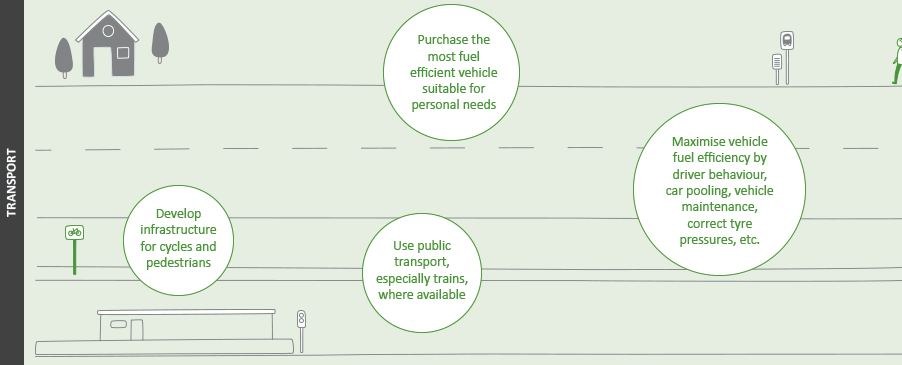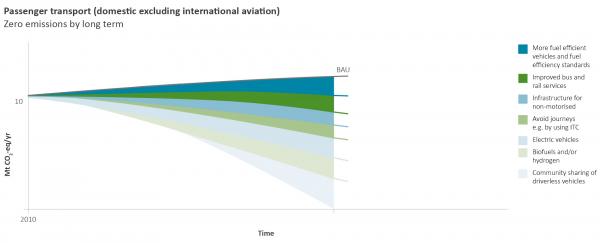Transport
This section covers mitigation options for transport. There are many opportunities to reduce fossil fuel use in this sector:
- new technologies and low-carbon travel choices can play a part, including more fuel-efficient vehicles
- using low-carbon fuels such as renewable electricity and biofuels
- using buses, light rail, cycling and walking; and improving urban design to encourage their use
- journey avoidance and modal shifts for freight such as greater use of rail and sea transport will also assist
In pictures

Actions we can take in the transport sector now towards a low-carbon future for New Zealand

Approximation of potential emission reductions in freight transport

Approximation of potential emission reductions in the passenger transport sector
Key findings
- Our transport sector is 99% dependent on fossil fuels, so mitigation actions are possible by individuals, communities, businesses and local governments.
- New Zealand’s GHG emissions from road transport could reduce by at least 60% by 2050 if large-scale uptake of low emissions technologies such as electric vehicles (EVs) occurs; fuel efficiency standards and other measures are introduced; and fuel retail prices increase as a result of high oil and carbon prices.
- Unless the purchase price of zero emission electric or hydrogen fuelled vehicles declines, in spite of their lower running and maintenance costs, large-scale rapid adoption in the short term will require the use of policy instruments.
- Rail has significantly lower emissions than road per kilometre for carrying a given volume of freight. At the present level of rail electrification, the transport of freight by rail on average per tonne kilometre typically produces only around a third of the emissions compared with transporting freight by road.
- Domestic biofuels based on food processing by-products (from whey, used cooking oils, tallow and biogas from organic wastes) don’t compete for land use and can be competitive with petroleum products. However, available feedstock volumes limit them to around 3-5% of road transport fuels.
- Production of bio-ethanol and other drop-in biofuels from ligno-cellulosic feedstocks are emerging technologies but remain costly so require lower feedstock prices that will be challenging to meet in New Zealand.
- The use of private vehicles can be substantially reduced through:
- urban design that prioritises walking and cycling
- accessible and timely low emission public transport, especially rail
- early adoption of smart transport technologies and possibly driverless vehicles, though the benefits are uncertain.
Read the summary
- Transport, p14
Read the report
- Transport, p90
- Sources of transport fuels
- Greenhouse gas emissions
- Mitigating actions
- Biofuel potential for the future
- Transport fleet of the future
- National and regional mitigating actions and policies
- Knowledge gaps
